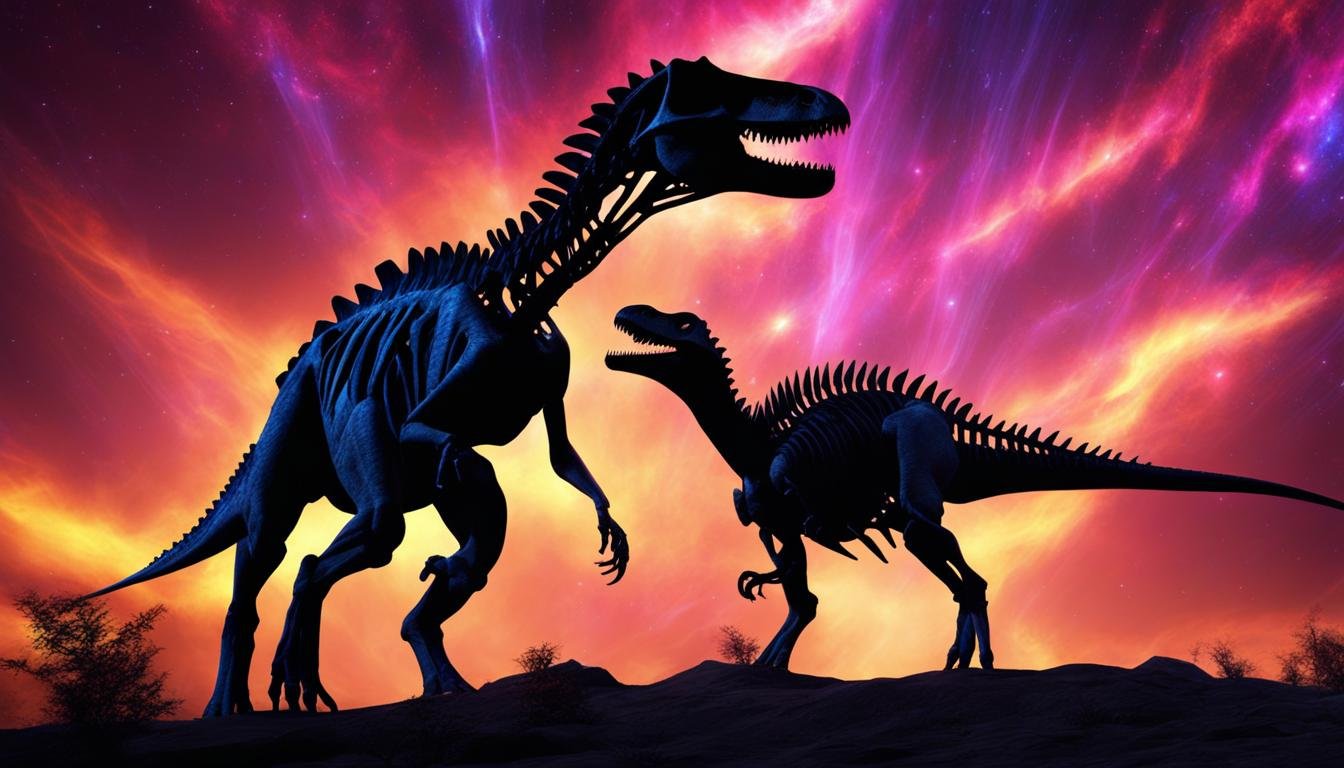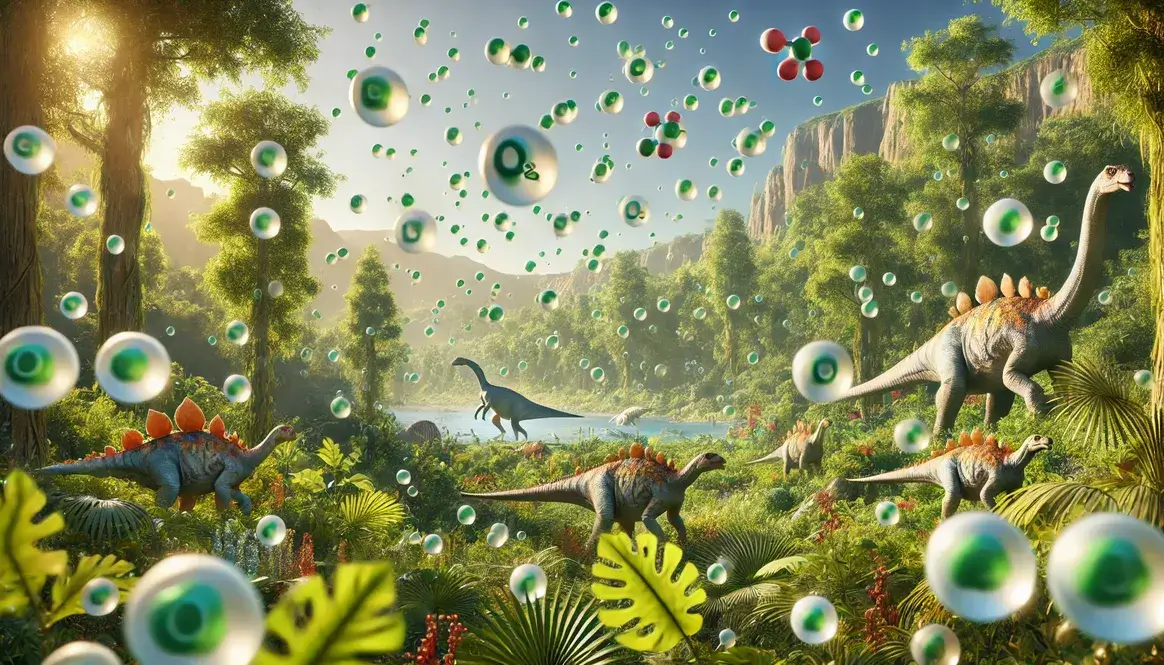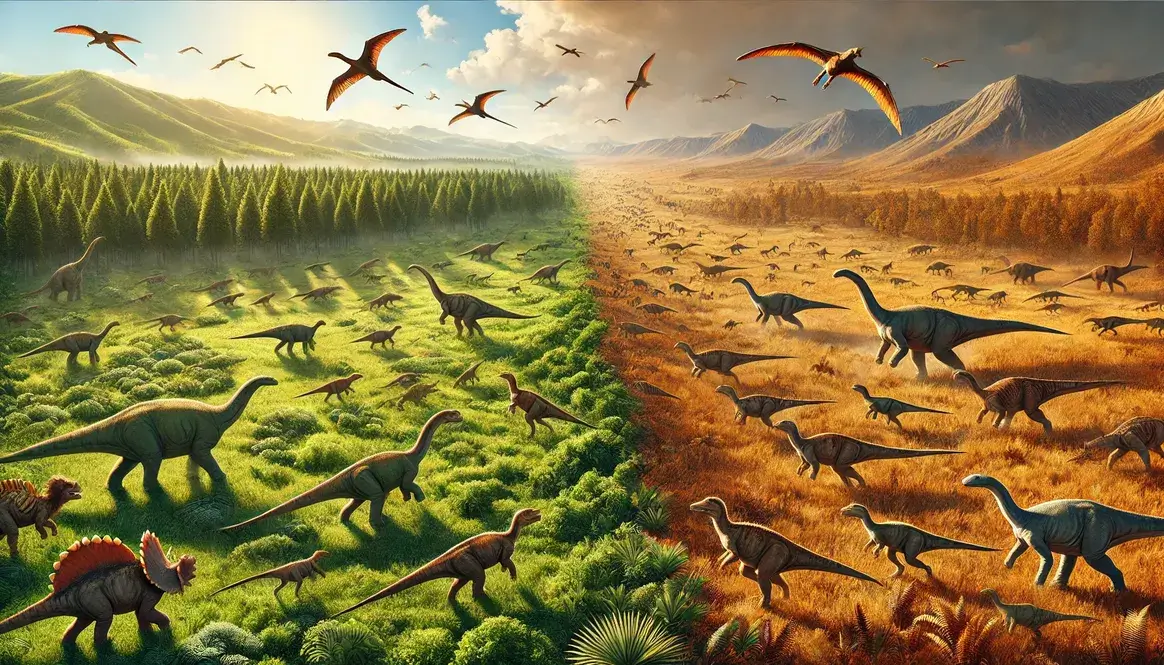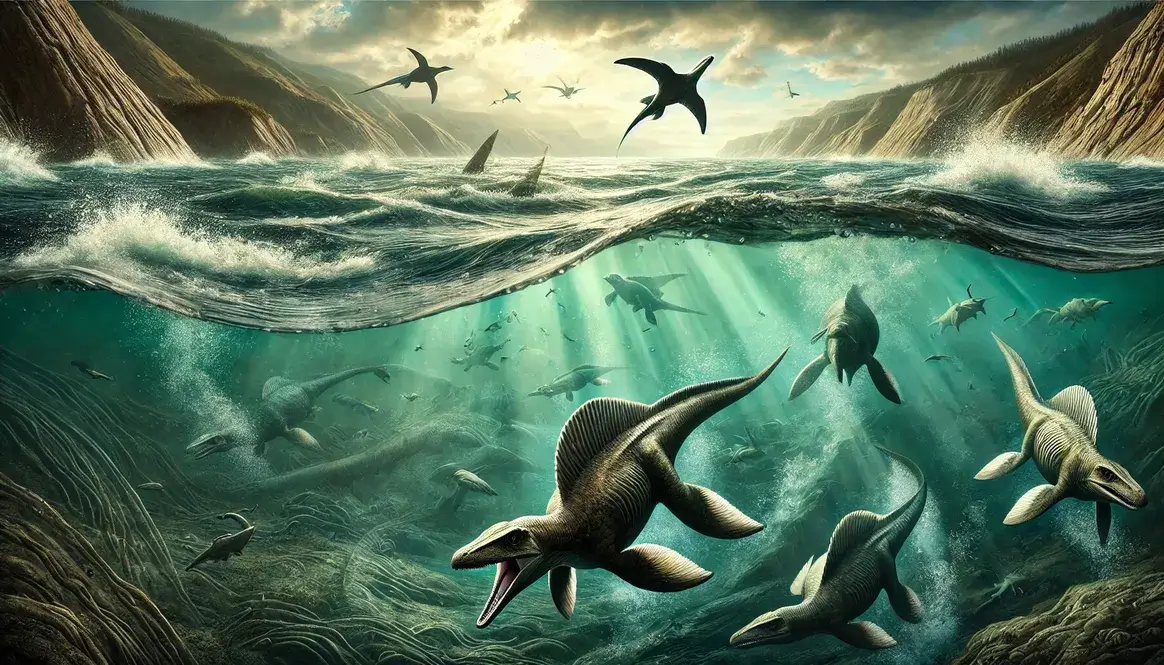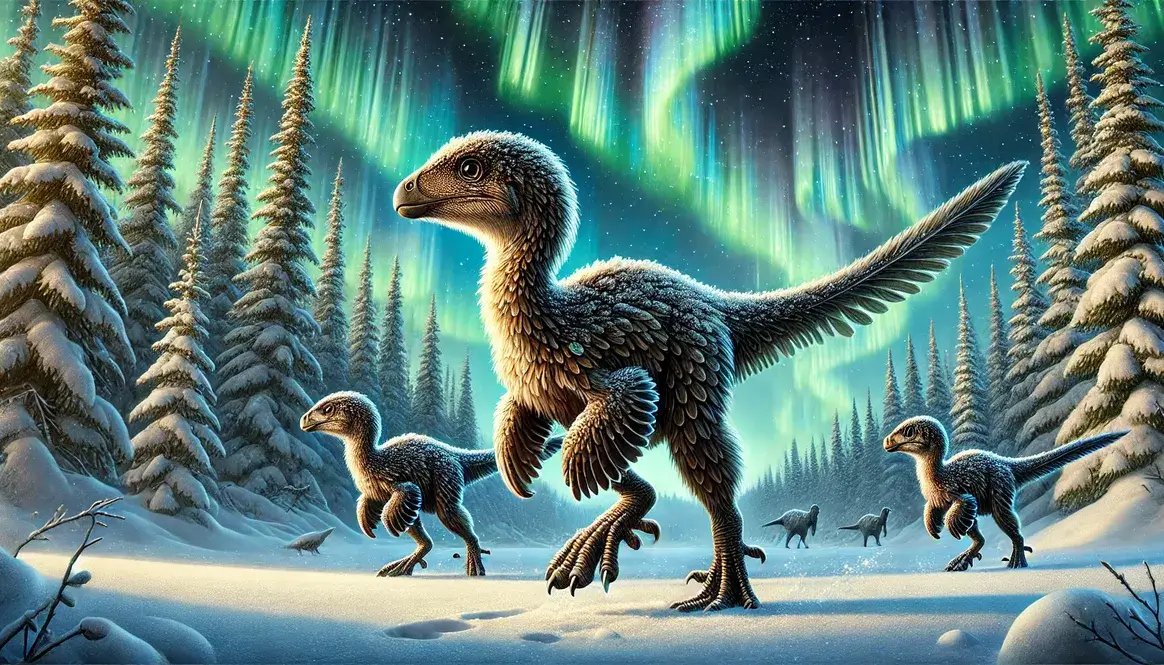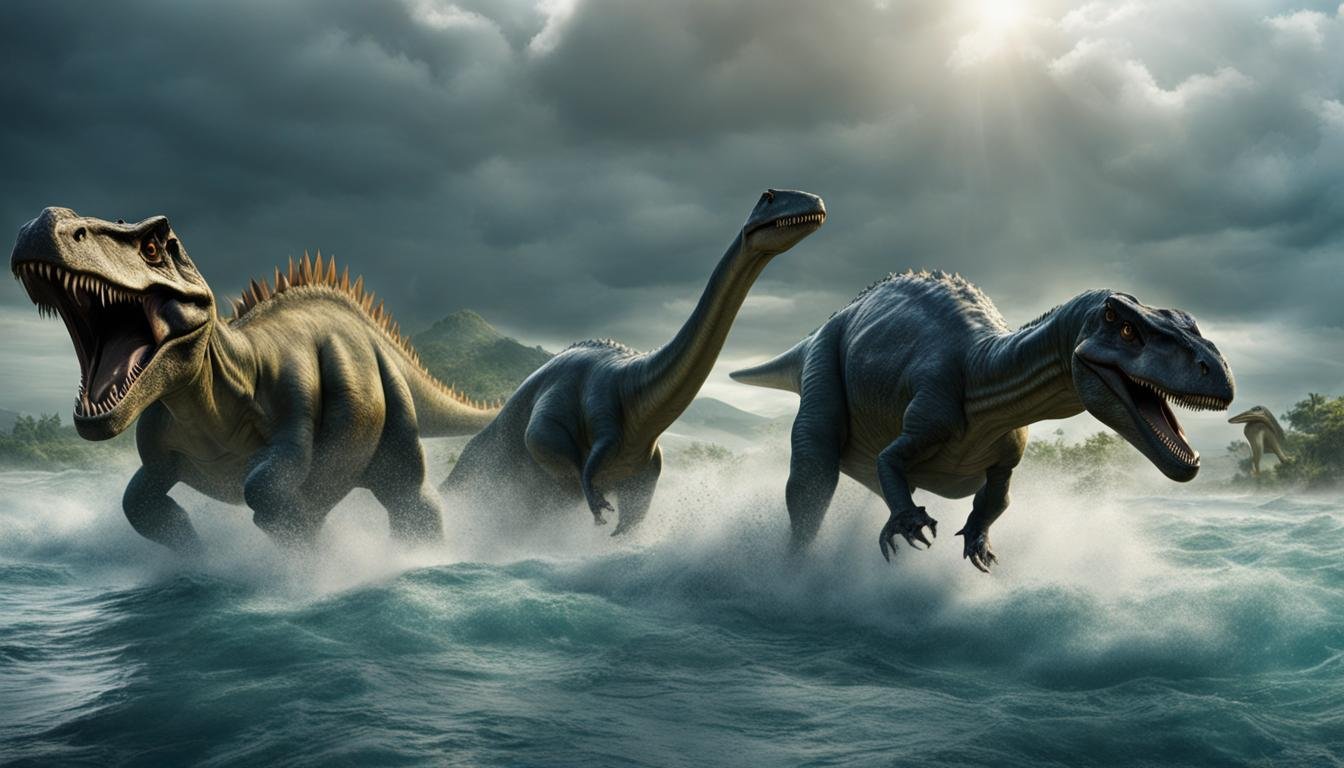Scientists have long been intrigued by the mystery surrounding the extinction of dinosaurs. While various theories have been proposed, one fascinating possibility is the role of cosmic radiation. Could the effects of cosmic radiation have played a significant part in the downfall of these ancient creatures?
According to scientific hypotheses, cosmic rays and gamma rays generated by a nearby supernova explosion or the collision of twin stars could have interacted with the Earth’s atmosphere, causing radiation exposure. This exposure, in turn, may have contributed to the mass extinction patterns observed in the geological record.
| Main Point | Description |
|---|---|
| Impact of Cosmic Radiation | Cosmic radiation from events like supernova explosions could have significantly affected Earth’s atmosphere. |
| Link to Mass Extinction | This radiation exposure might be associated with the mass extinction of dinosaurs and other species. |
| Need for Further Research | More comprehensive research is necessary to fully understand the potential effects of cosmic radiation on dinosaur extinction. |
| Cosmic Radiation as a Contributing Factor | Cosmic radiation is considered one of several factors under investigation in relation to the mass extinction event. |
| Insights from Paleomagnetic Evidence | Studying paleomagnetic evidence and genetic mutations can help understand the impact of radiation exposure on ancient species. |
The Role of Solar Flares and Magnetic Field Anomalies
One of the extinction theories surrounding dinosaurs involves the role of solar flares and magnetic field anomalies. Solar flares, massive eruptions of energy from the Sun’s surface, release large amounts of ionizing radiation. This radiation, including high-energy gamma rays and particles, can have detrimental effects on life on Earth. The potential impact of solar flares on the extinction event is intriguing, as these intense bursts of radiation could have caused widespread radiation exposure.
Additionally, magnetic field anomalies, such as geomagnetic reversals, have been proposed as contributing factors to the extinction of dinosaurs. These anomalies result from significant changes in the Earth’s magnetic field, which can lead to disruptions in the magnetosphere. The magnetosphere plays a crucial role in shielding the Earth from cosmic radiation. Therefore, when the magnetosphere is weakened or damaged due to anomalies, the exposure to harmful radiation, including cosmic rays, increases.
“Solar flares and magnetic field anomalies are fascinating factors to consider in the study of dinosaur extinction. The release of ionizing radiation from solar flares and the disruption of the Earth’s magnetosphere due to magnetic field anomalies could have amplified the effects of cosmic radiation on living organisms.”
To better understand the potential impact of solar flares and magnetic field anomalies on the extinction event, scientists analyze geological records, cosmic radiation levels, and the presence of radiation-induced damage in fossils. Through these investigations, researchers hope to uncover more evidence and insights into the fascinating connection between these two factors and the demise of the dinosaurs.
| Factors | Explanation |
|---|---|
| Solar Flares | Massive eruptions of energy from the Sun’s surface that release ionizing radiation |
| Magnetic Field Anomalies | Changes in the Earth’s magnetic field that can disrupt the magnetosphere, leading to increased exposure to cosmic radiation |
Additional Factors at Play
While solar flares and magnetic field anomalies are significant factors to consider in the extinction event, they are not the sole explanations. Other environmental stressors, such as ozone layer depletion, ultraviolet radiation increase, and climate disruption, likely played crucial roles as well. The intricate interplay of these factors and their potential effects on the global ecosystem during the time of the dinosaurs’ existence and extinction continue to be subjects of ongoing scientific research and analysis.
Paleomagnetic Evidence and Genetic Mutations
Paleomagnetic evidence suggests that the Earth’s magnetic field has experienced significant fluctuations throughout history, including the time of the dinosaur extinction. By studying the alignment of magnetic minerals in rocks, scientists have been able to reconstruct past changes in the Earth’s magnetic field. These changes could have had profound effects on the exposure of the Earth’s surface to cosmic radiation, which can lead to genetic mutations and other forms of radiation-induced damage.
The alignment of magnetic minerals in rocks is a result of the Earth’s magnetic field at the time the rocks were formed. By analyzing the orientation of these minerals, scientists can determine the latitude at which the rocks were originally located. This information can then be used to reconstruct the movement of continents over time and the changes in the Earth’s magnetic field. The data obtained from paleomagnetic studies has provided valuable insights into the behavior of the Earth’s magnetic field and its potential impact on the environment.
Genetic mutations can occur when DNA is damaged by radiation. High-energy cosmic rays, which are a form of radiation from space, can penetrate the Earth’s atmosphere and cause damage to living organisms. The mutations that result from this damage can have both positive and negative effects. In the case of the dinosaur extinction, radiation-induced genetic mutations could have had a detrimental impact on the survival and reproductive capabilities of dinosaur populations and other species.
Understanding the relationship between paleomagnetic evidence, genetic mutations, and the extinction of dinosaurs is complex and requires further research. However, by studying the geological record and analyzing the effects of radiation exposure on living organisms, scientists are gaining a better understanding of the potential role played by cosmic radiation in shaping Earth’s history.
| Paleomagnetic Evidence | Genetic Mutations | Atmospheric Changes | Radiation-Induced Damage |
|---|---|---|---|
| Reconstructs past changes in the Earth’s magnetic field | Can lead to both positive and negative effects | May have been influenced by cosmic radiation | Caused by high-energy cosmic rays from space |
| Provides insights into the behavior of the Earth’s magnetic field | Impact on survival and reproductive capabilities | Can result in changes to the Earth’s climate | Affects the DNA of living organisms |
| Helps understand the relationship between magnetic field changes and environmental impact | Study of radiation-induced damage in living organisms | Could have contributed to extinction events | Can lead to genetic mutations and abnormalities |
Ozone Layer Depletion and Increased Ultraviolet Radiation
The depletion of the ozone layer is one of the environmental stressors that could have played a significant role in the extinction of dinosaurs. The ozone layer acts as a protective shield, absorbing much of the sun’s harmful ultraviolet (UV) radiation before it reaches the Earth’s surface. However, human activities, such as the release of chlorofluorocarbons (CFCs), have led to the thinning of this crucial layer.
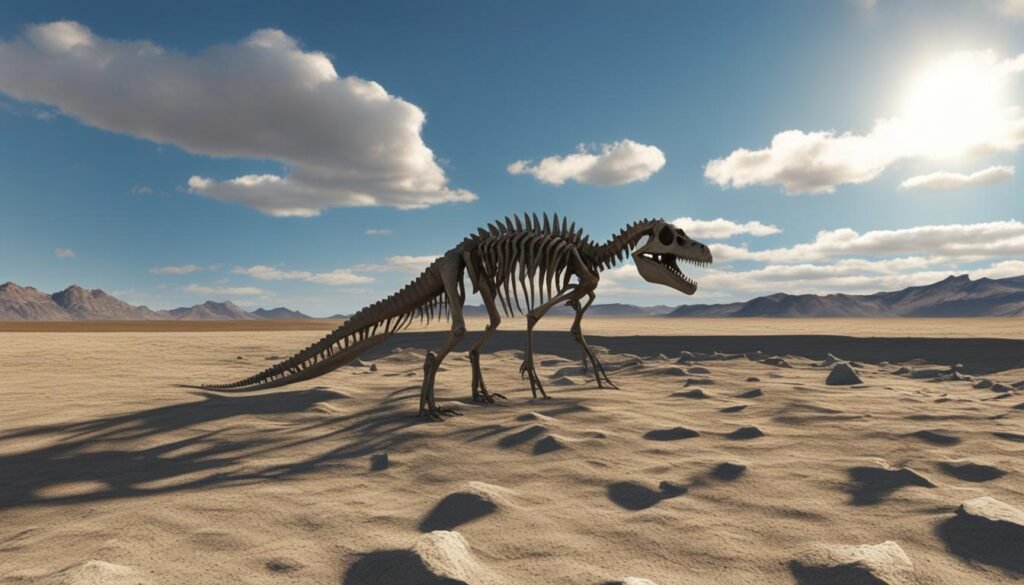
The increased levels of UV radiation resulting from ozone layer depletion could have had detrimental effects on the environment and living organisms. UV radiation can cause DNA damage, disrupt ecosystems, and harm the reproductive capabilities of species. The heightened exposure to UV radiation could have directly impacted dinosaurs, influencing their ability to survive and reproduce.
Moreover, the effects of increased UV radiation would not have been limited to dinosaurs alone. Other species, including plants and marine organisms, could have also suffered from this environmental stressor. The disruption of ecosystems caused by ozone layer depletion and increased UV radiation could have cascading effects, contributing to the extinction event observed in the fossil record.
| Effects of Ozone Layer Depletion and Increased Ultraviolet Radiation |
|---|
| 1. DNA damage and mutation in organisms |
| 2. Harm to plant life and decreased photosynthesis |
| 3. Disruption of marine ecosystems and coral bleaching |
| 4. Negative impact on reproductive capabilities of species |
It is crucial to understand the interplay between ozone layer depletion, increased UV radiation, and the extinction event. Further research and analysis of paleoclimatology data can provide valuable insights into the long-term consequences of this environmental stressor and its potential contribution to the demise of the dinosaurs.
The Role of Space Weather and Climate Disruption
During the time of the dinosaur extinction, space weather could have played a significant role in climate disruption, which in turn may have led to several survival adaptations and increased biotic stress on the Earth’s ecosystems. Space weather refers to the conditions in space surrounding our planet, including solar activity and cosmic radiation. These factors could have had a profound impact on the climate patterns that dinosaurs and other species were accustomed to.
One potential effect of space weather on climate disruption is the alteration of atmospheric conditions. Changes in solar activity, such as solar flares, can release large amounts of energy and particles that interact with the Earth’s atmosphere. This interaction can lead to variations in temperature, wind patterns, and precipitation, which would have disrupted the stable climate that supported the diverse ecosystems of the Mesozoic era.
“The potential influence of space weather on climate disruption during the dinosaur extinction event cannot be ignored. Solar flares and cosmic radiation could have caused significant changes in the Earth’s atmosphere, triggering a cascade of effects that impacted the survival and reproductive abilities of species.”
These climate disruptions would have put severe stress on both terrestrial and marine organisms, including dinosaurs. Adapting to rapidly changing environmental conditions would have required significant survival strategies, such as changes in migration patterns, altered feeding habits, and the development of physiological adaptations to cope with increased biotic stress.
Survival Adaptations and Biotic Stress
The survival adaptations of dinosaurs and other species during the extinction event may have included changes in body size, shifts in habitat preference, and modifications to reproductive strategies. For example, some dinosaurs may have evolved to become smaller, which would have allowed them to require less food and inhabit different ecological niches. Others may have migrated to new regions with more favorable climates or developed mechanisms to cope with increased biotic stress, such as resistance to radiation-induced damage.
| Dinosaur Adaptations | Examples |
|---|---|
| Dietary changes | Transition from herbivory to omnivory |
| Migration | Movement to regions with more stable climates |
| Size reduction | Evolution of smaller body sizes to reduce resource requirements |
| Reproductive strategies | Increased clutch sizes and shorter generation times |
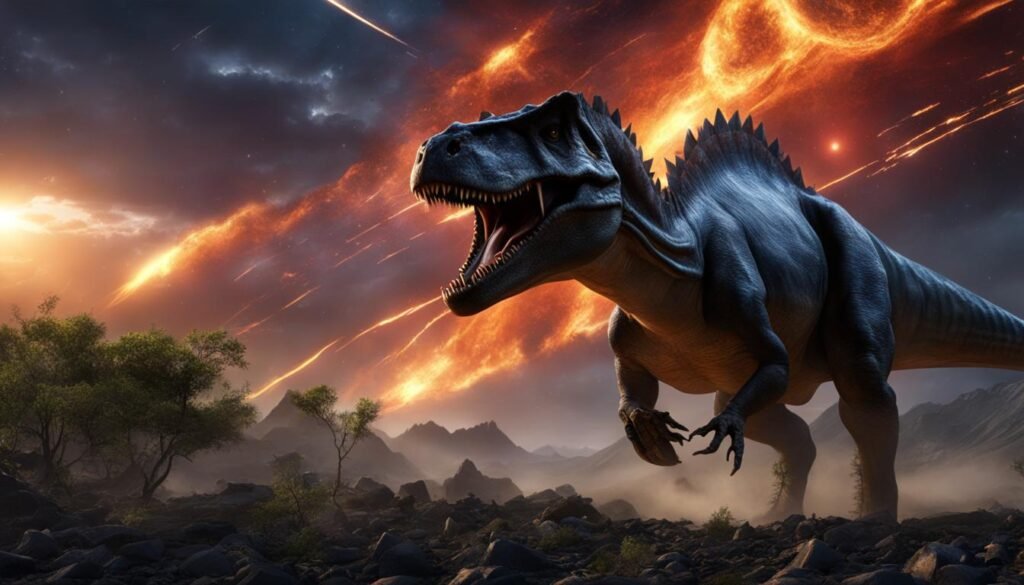
Conclusion
In conclusion, the possible effects of cosmic radiation on dinosaur extinction are still a subject of ongoing scientific research and debate. The extinction event that wiped out the dinosaurs and other species was a complex phenomenon influenced by various factors, including solar flares, magnetic field anomalies, ozone layer depletion, and climate disruption. These factors had a significant impact on the Earth’s magnetosphere and global ecosystem.
Paleomagnetic evidence and genetic mutations provide valuable insights into the potential effects of radiation exposure on living organisms. By studying the alignment of magnetic minerals in rocks, scientists have been able to uncover significant changes in the Earth’s magnetic field throughout history. These changes could have led to increased exposure to cosmic radiation, resulting in genetic mutations and consequent effects on the survival and reproductive capabilities of dinosaurs and other species.
Further studies utilizing paleoclimatology data can enhance our understanding of the relationship between cosmic radiation and mass extinction events. By analyzing climatic changes in the geological record, scientists can gain insights into how space weather, including solar activity and cosmic radiation, affected the Earth’s climate and ecosystems. This knowledge can provide valuable information about how global ecosystems can be impacted by external factors, ultimately leading to mass extinctions.
In summary, the study of mass extinction events, the Earth’s magnetosphere, and paleoclimatology data is crucial in unraveling the mysteries surrounding cosmic radiation and its potential role in dinosaur extinction. The ongoing research in these fields aims to shed light on the complex interplay between space weather, environmental stressors, and the survival and adaptation of species in the face of changing climatic conditions.

